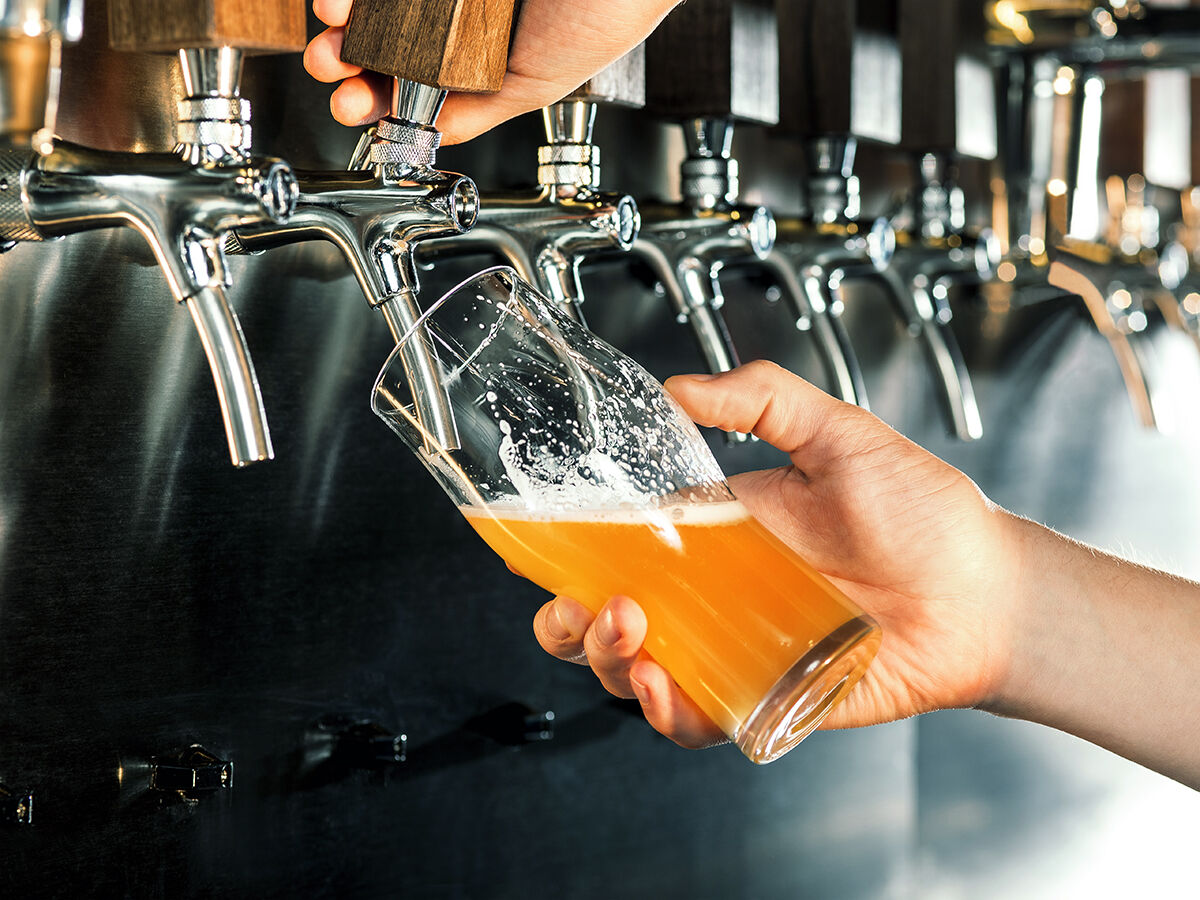You can walk into a restaurant the most ardent follower of The Guidelines. You have sheltered in place since 1984. You haven’t come within nine feet of another human since February. You sleep in your mask and MacGyvered your showerhead to dispense Lysol. Still, after two martinis, there’s a decent chance your mask is dangling from one ear like an off-brand house DJ. You are no longer even softish-spoken, because the human volume knob turns with each sip. You might go in for the high five or even the hug. You’ve missed hugs.
Exacerbating this is that Americans need the stiffest drink right now. We have a pent-up need to socialize, be normal. Some of us have been sheltering alone or with the same partner for four months. Plus, we’re a little nervous to go out into dining rooms. A drink would take that edge off.
And this presents the dilemma—the bar that’s kept restaurants alive for years now presents one of their biggest dangers.
We’ve all seen the bars who disregarded the governor’s public health guidelines wholesale. Most restaurateurs I’ve talked to blame selfish actors like these for getting the entire local industry shut down. But even at a restaurant where owners take the guidelines extremely seriously—a couple cocktails lay waste to the best laid plans. As one of those owners told me: “I sell a ton of craft beer. How well do you think people are going to adhere to the safety guidelines after a couple?”
Much as I enjoy the wood-cabin taste of a decent bourbon, alcohol’s real charm is its ability to lull our internal editor to sleep. It takes the whistle away from the crossing guard in our frontal lobe. You’ve made decisions all day, you’ve second-guessed, hemmed, hawed, advocated for the devil against yourself, listed the pros, slogged through the cons.
After a couple of beers we tend to over-say and over-hug, not overthink. That’s because alcohol neutralizes the GABA transmitter in our brains, which is in charge of inhibitions. This is why Socrates encouraged thinkers at his symposia to drink a bit of wine to loosen their minds and lips.
During the pandemic, this charm presents a real problem. Many establishments—not all, but many of the ones you like spending a night in—need to sell alcohol. It’s not a “nice to have” part of their business. The bar pays the bulk of their bills. Alcohol sales bring in on average about 1.5 to two times the profit as food does.
“This is a huge dilemma for us and everybody,” says a top local restaurateur who asked to remain anonymous. “We all know it costs a lot less to pay someone to pour a customer a drink then it costs for us to pay someone to make a cheeseburger. Margins on LBW [liquor, beer, and wine] are much greater than food. When we’re writing budgets for the year or preformas for a new restaurant, a large dollar amount comes from LBW—40 to 60 percent, depending on the concept. Some a higher percentage than that.”
So by doing what they’ve always done to stay afloat—push sales from the bar—restaurants automatically put themselves at a disadvantage in keeping everyone COVID-cool. Their business model reduces a guest’s ability to remain vigilant in a time when vigilance is matter of public health.
“When you get intoxicated and are starting to feel good, your voice levels go up and most likely you’re starting to forget about the hell storm that is going on in the world right now,” says the restaurateur. “Then the virus may spread. This is and will be the new normal for a while. It is our job as restaurateurs to make sure we mitigate this as much as possible. Everyone likes to point fingers at everyone else, pissed that we get shut down, pissed that we are at limited capacity, the list goes on. Are they doing the correct thing by physically distancing tables, bar stools, path of travel, et cetera? If the restaurant business is 70 to 75 percent of the cases, something isn’t right. If we are ever allowed to reopen indoor dining in the near future, the responsibility lies with us.”
Obviously, restaurants need to make sure they’re not overserving someone. But what about the responsible majority who just sell a few glasses of wine? I’ve had more than two (and more than four) in a restaurant before. In a pre-pandemic world, this was fine, some of the best nights of my life (and greatest mistakes).
Like everything during the pandemic, the responsibility is shared among us all. Maybe I don’t have that pregame cocktail before going to dinner. Maybe I keep myself to two glasses of wine with dinner, and if I really want another glass, order a bottle to go (to-go alcohol is currently legal).
The bottom line is that when restaurants are allowed to reopen, it’s not a great idea to get real loose at table four.
“The responsibility lies with the operator to try and make the establishment safe so we can keep our doors open,” says my restaurateur. “You would think the customer is always going to do the right thing. We know that’s not the case. This may be the first time in history that ‘the customer is always right’ is a wrong way of thinking. Now we need to step in and do the right thing. When people are spending money, it is very hard to make them stop, especially when they are drinking heavily. Trust me, that is normally the worst thing you want to do.”

PARTNER CONTENT
Dining During COVID / The Alcohol Dilemma


















